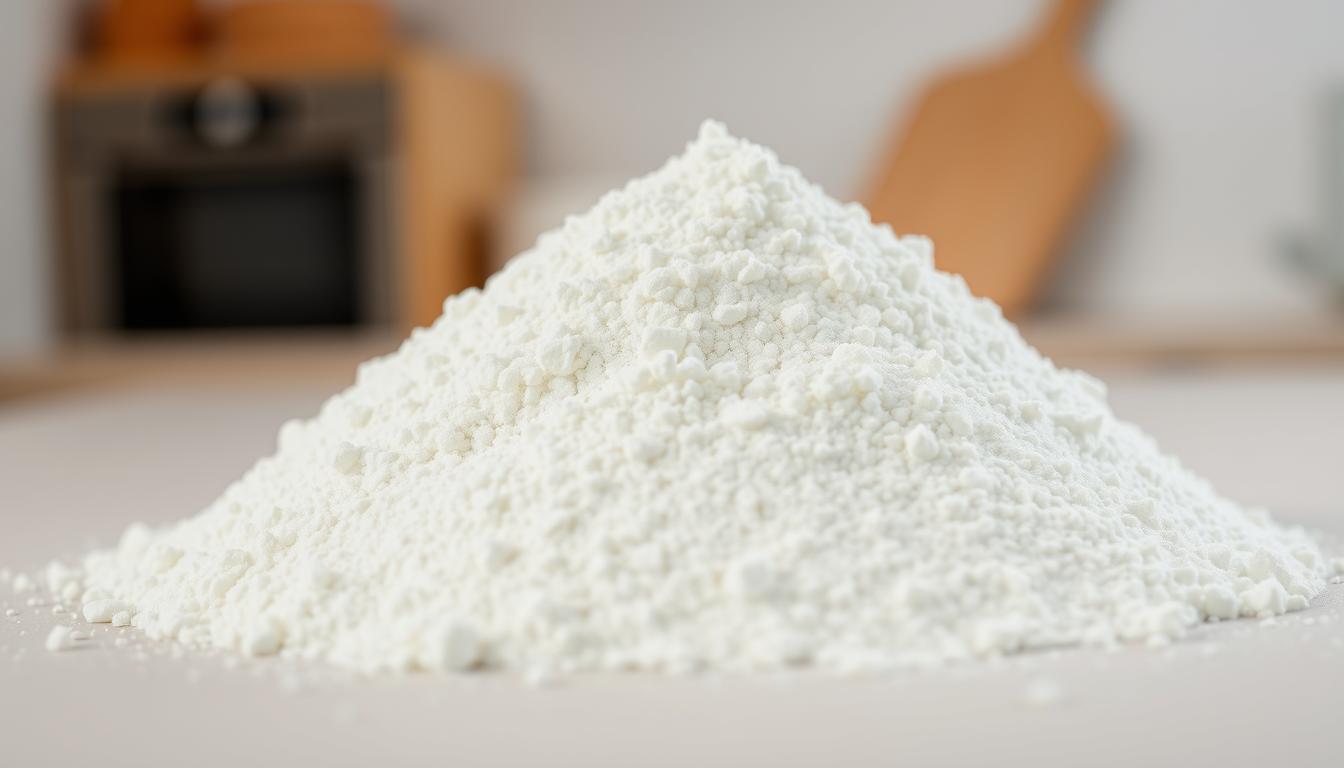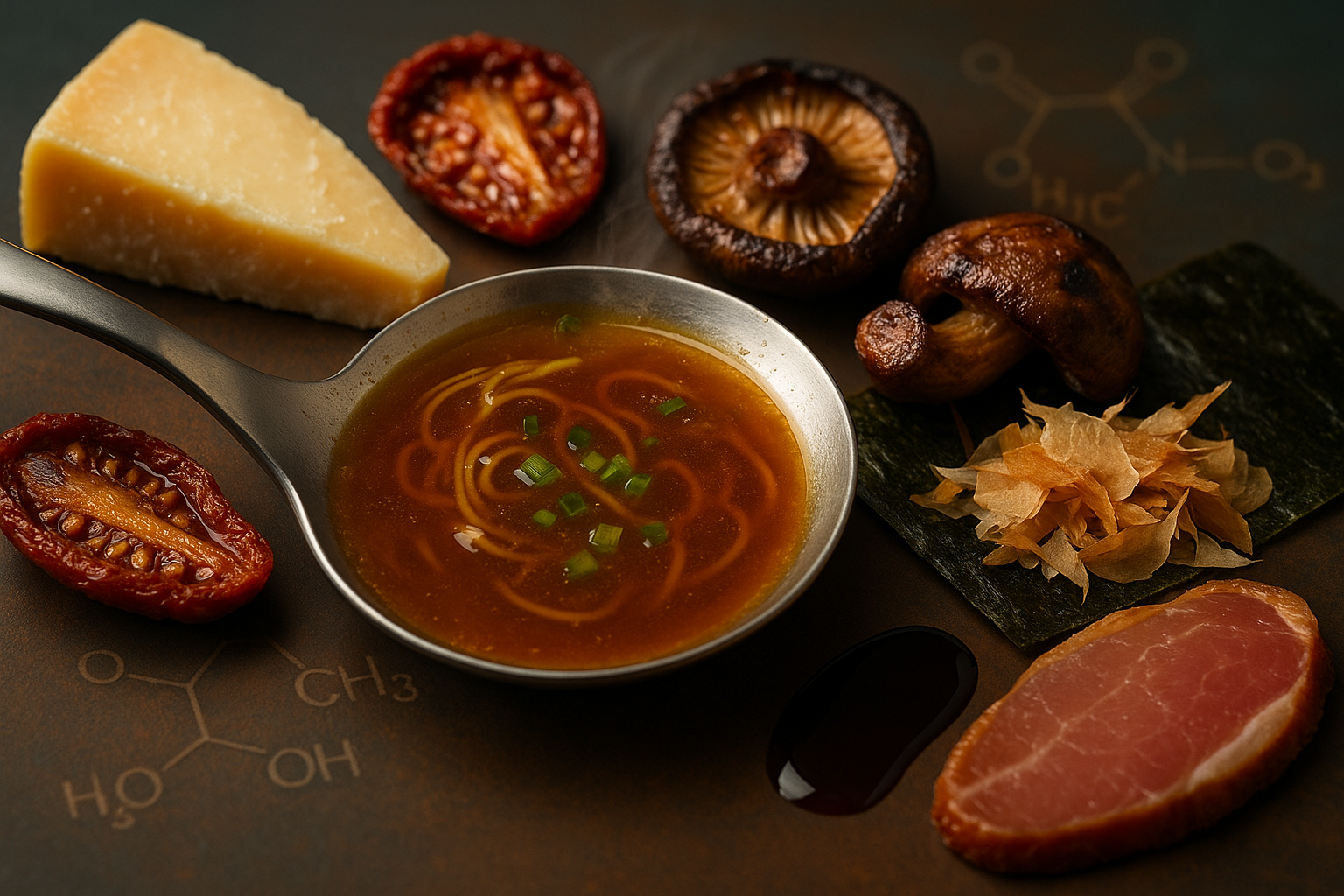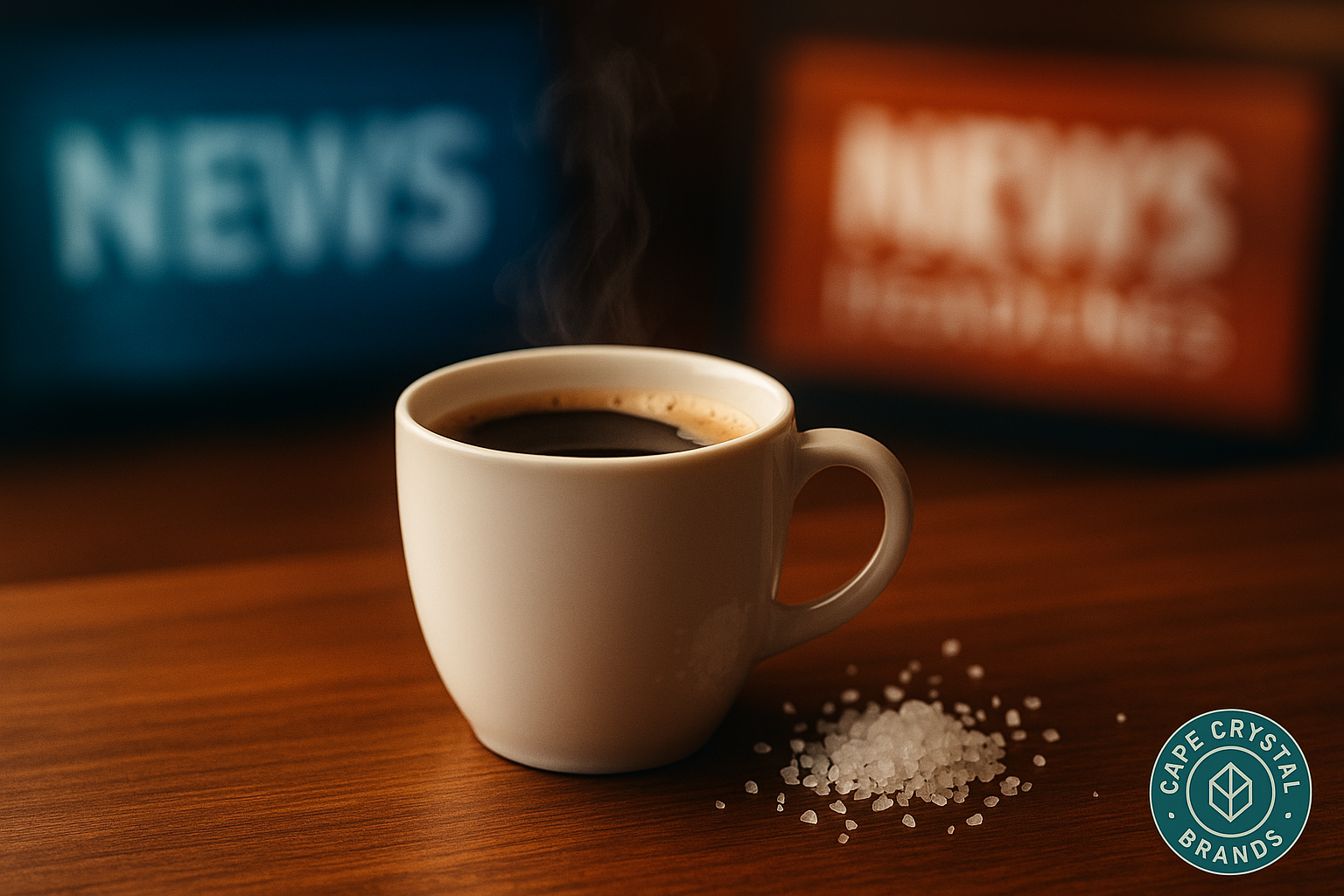
Modernist Cooking Techniques: A Deep Exploration
SUBSCRIBE TO OUR BLOG
Promotions, new products, and recipes.
Welcome to the exciting world of modernist cooking techniques, where science meets culinary art to create the most extraordinary flavors, textures, and presentations. In this article, we will delve into the various techniques used in modernist cooking and how they have revolutionized the culinary industry. Whether you're a passionate home cook or a professional chef, you'll discover new insights that will elevate your cooking game to the next level.
Key Takeaways:
- Modernist cooking techniques use scientific principles and technology to create unique culinary experiences.
- Molecular cooking is a popular aspect of modernist cooking that involves the use of chemicals and ingredients like hydrocolloids and sodium alginate.
- Hydrocolloids are essential ingredients in modernist cooking techniques that help achieve desired textures and flavors.
- Sous vide is a precise cooking method that allows food to cook at exact temperatures for extended periods.
- Spherification is a remarkable technique that transforms liquids into delicate spheres.
Understanding Modernist Cooking
As a professional copywriting journalist, I have been fascinated by the world of modernist cooking techniques. This culinary movement has taken the industry by storm with its innovative approach to cooking and its focus on using scientific principles and technology. One popular aspect of modernist cooking is molecular cooking, which involves using chemicals and ingredients like hydrocolloids and sodium alginate to transform traditional dishes into extraordinary culinary creations.
Modernist cooking techniques have revolutionized the culinary industry, making it possible to create unique flavors, textures, and presentations that were once impossible. It is about understanding the science behind cooking and using that knowledge to push the boundaries of what is possible.
At the heart of modernist cooking is the desire to create dishes that are not only delicious but also visually stunning. This is where molecular cooking comes in. By using ingredients like hydrocolloids and sodium alginate, chefs can create spheres, foams, and other unique textures that add an element of surprise and elegance to their dishes.
But modernist cooking is not just about creating visually stunning dishes. It is also about creating dishes that are perfectly cooked every time. This is where precision cooking techniques like sous vide come in. By cooking food in vacuum-sealed bags at precise temperatures for extended periods, chefs can achieve a level of tenderness and flavor that is impossible to replicate with traditional cooking methods.
Overall, modernist cooking techniques have transformed the culinary industry, giving chefs the ability to create dishes that were once thought impossible. Whether you are a professional chef or a home cook, modernist cooking techniques offer endless possibilities for creating extraordinary culinary creations that will amaze your taste buds.
The Science Behind Modernist Cooking
Modernist cooking techniques may seem like magic, but there is a scientific method to the madness. These techniques rely heavily on the properties of ingredients like hydrocolloids to achieve specific textures and flavors.
So, what are hydrocolloids? They are substances that can form gels or thicken liquids by absorbing water. They are commonly found in everyday products such as toothpaste, ice cream, and salad dressing. In modernist cooking techniques, hydrocolloids are used to create unique textures and presentations that traditional cooking methods cannot achieve.
There are a variety of hydrocolloids used in modernist cooking, including carrageenan, agar agar, and xanthan gum. Each hydrocolloid has different properties and uses, and knowing which one to use in which situation is crucial for success in modernist cooking.
For example, carrageenan is commonly used to create a smooth texture in ice cream, while xanthan gum is used to thicken sauces and dressings. Agar-agar is often used in spherification to create delicate spheres with liquids.
Understanding the science behind modernist cooking techniques and the role of hydrocolloids is essential for any aspiring modernist chef. With this knowledge, you can take your culinary creations to new heights and impress your guests with unique flavors and textures.
Sous Vide: Precision Cooking at its Best
If you want to take your cooking to the next level, sous vide is a technique you need to try. This modernist cooking method involves cooking food in vacuum-sealed bags at precise temperatures for extended periods, resulting in deliciously tender and flavorful dishes.
One of the benefits of sous vide is its accuracy. Unlike traditional cooking methods, where it can be easy to over or undercook your food, sous vide allows for precise control of temperature and cooking time. This ensures that your food is cooked to perfection every time.
To get started with sous vide, you'll need some specialized equipment, including an immersion circulator and vacuum sealer. You'll also need to select the appropriate cooking temperatures and times for the type of food you're cooking.
| Sous Vide Equipment: | Description: |
|---|---|
| Immersion Circulator | A device that heats and circulates water to a precise temperature, ensuring consistent cooking. |
| Vacuum Sealer | A machine that removes air from a bag and seals it, allowing for efficient and safe cooking. |
| Food-Grade Bags | Bags that are safe to use for cooking and can withstand high temperatures. |
Once you have your equipment and ingredients ready, simply seal your food in the bag, set the temperature and cooking time, and let the immersion circulator do the rest. Your food will cook gently and evenly, resulting in a perfectly cooked dish every time.
Whether you're cooking steak, chicken, fish, or vegetables, sous vide is a game-changer in the kitchen. Try it out and see for yourself the wonders this modernist cooking technique can do.
Spherification: From Liquid to Sphere
If you're looking to add an element of surprise and elegance to your dishes, spherification is the way to go. This modernist cooking technique allows liquids to transform into delicate spheres, creating a visually stunning presentation and adding an explosion of flavor to your dishes.
There are two types of spherification: basic and reverse. Basic spherification involves mixing a sodium alginate solution with the liquid you wish to transform into spheres. The mixture is then dripped into a calcium chloride solution, causing the exterior of the liquid to form a thin, gel-like membrane, while the interior remains liquid. Reverse spherification involves first mixing the liquid with a calcium lactate solution, then placing it in a sodium alginate bath. The result is a sphere with a thicker membrane and a liquid center.
To achieve perfect spheres, it's important to use the right proportions of sodium alginate and calcium chloride or calcium lactate, as well as the appropriate techniques for dripping the liquid into the solution. Spherification kits are widely available and simplify the process, making it easy to add this modernist cooking technique to your culinary repertoire.
Emulsification: Creating Smooth and Creamy Textures
Emulsification is a technique I love using in modernist cooking. It involves creating smooth and creamy textures in sauces, dressings, and more. This technique requires a bit of practice and understanding of the science behind it, but once you master it, the possibilities are endless.
Emulsification is the process of combining two immiscible liquids, such as oil and vinegar, to create a smooth, stable mixture. It works by breaking down the fat particles in the oil into tiny droplets and suspending them in the water-based liquid with the help of an emulsifier.
The most common emulsifiers used in modernist cooking are egg yolks and mustard, but other ingredients like lecithin and xanthan gum can also be used. These ingredients act as stabilizers, keeping the oil and water from separating.
When making an emulsion, it's important to slowly and continuously add the oil to the water-based liquid while whisking vigorously. This allows the droplets of oil to disperse evenly throughout the mixture. It's also important to keep the ingredients at similar temperatures, which helps them combine more easily.
Another key factor in emulsification is the ratio of oil to water-based liquid. Generally, a 3:1 ratio of oil to liquid is used for a thick and creamy texture, while a 2:1 ratio is used for a thinner consistency.
Emulsification can be used to create a variety of sauces and dressings, such as mayonnaise and vinaigrettes. You can also experiment with different flavors and ingredients to create your own unique emulsions.
Overall, emulsification is an essential modernist cooking technique that can take your dishes to the next level. With a bit of practice and experimentation, you can create smooth and creamy textures that will impress your guests and elevate your cooking game.
Foam Formation: Light and Airy Delights
One of the most popular modernist cooking techniques is foam formation. Chefs use it to create light and airy textures in dishes to add an element of surprise and elegance. There are different methods to create foams, such as whipping, gelling agents, and the use of whipping siphons.
Whipping is the simplest way to form foam. Chefs whip ingredients like cream, egg whites, or aquafaba to incorporate air and create a frothy and light texture. Gelling agents, such as gelatin or agar-agar, can also be used to create stable and long-lasting foams.
Whipping siphons are another tool used in foam formation. Chefs combine ingredients with gas, such as nitrous oxide, in a whipping siphon to create a foam with a fine and delicate texture. This technique allows for precise control of the amount and size of bubbles, resulting in a consistent foam every time.
Foam formation offers endless possibilities in modernist cooking techniques. Chefs can use it to create foams for desserts, sauces, and even savory dishes. It allows for creative presentation and adds a unique texture and flavor to traditional dishes.
As you experiment with foam formation, keep in mind that different ingredients and tools can affect the final texture and stability of the foam. But with practice and patience, you can add a touch of elegance and sophistication to your culinary creations with foam formation.
Join me in the next section as we explore the essential tools and equipment for modernist cooking techniques.
Modernist Cooking Tools and Equipment
Now that we've explored the fascinating world of modernist cooking techniques, let's talk about the essential tools and equipment you'll need to get started in your own kitchen. While some of these tools may seem intimidating, they are all essential to achieving the precise temperatures, textures, and presentations that define modernist cooking.
| Equipment | Description |
|---|---|
| Immersion Circulator | This tool is essential for sous vide cooking. It circulates and heats water to an exact temperature, ensuring perfectly cooked food every time. |
| Vacuum Sealer | Used for sealing food in bags before cooking sous vide, a vacuum sealer removes all the air to create an airtight seal that helps food cook evenly. |
| Spherification Kit | This kit includes all the ingredients and tools needed to create delicate spheres using the spherification technique. |
| Whipping Siphon | A whipping siphon can be used to create light and airy foams and emulsions. It uses pressurized gas to create the desired texture. |
| Hydrocolloids | Hydrocolloids are essential ingredients in modernist cooking. They are used to achieve unique textures and flavors in sauces and dressings. |
Investing in these tools and ingredients may seem daunting, but they are necessary to fully embrace the world of modernist cooking. As you become more comfortable with these techniques, you can experiment with different tools and ingredients to create new and exciting dishes.
Remember, modernist cooking is all about pushing boundaries and exploring new possibilities. With these tools and techniques at your disposal, you can take your culinary creations to new heights and impress even the most discerning foodies.
Conclusion
In conclusion, modernist cooking techniques have revolutionized the culinary industry. These innovative approaches to cooking allow chefs to create unique and extraordinary dishes using scientific principles and technology. Whether it's sous vide for precision cooking, spherification for transforming liquids into delicate spheres, or foam formation for light and airy textures, modernist cooking techniques offer endless possibilities for creative expression. By embracing modernist cooking techniques, you can expand your culinary horizons and take your dishes to a whole new level.
To fully embrace this approach to cooking, you will need the right tools and equipment such as immersion circulators, vacuum sealers, and spherification kits. So why not join the modernist cooking revolution and discover the exciting world of modernist cooking techniques today? With a little experimentation and practice, you can amaze your taste buds and impress your guests with extraordinary creations in the comfort of your own kitchen. Try out these modernist cooking techniques, and see where your creativity takes you. Modernist cooking techniques - the gateway to culinary masterpieces.
FAQ
Q: What is modernist cooking?
A: Modernist cooking is an innovative approach to cooking that involves using scientific principles and technology to create unique flavors, textures, and presentations.
Q: What is molecular cooking?
A: Molecular cooking is a popular aspect of modernist cooking that involves using chemicals and ingredients like hydrocolloids and sodium alginate to transform traditional dishes into extraordinary culinary creations.
Q: How does modernist cooking incorporate scientific principles?
A: Modernist cooking techniques heavily rely on scientific principles to achieve desired textures and flavors. Ingredients like hydrocolloids play a crucial role in this process.
Q: What is sous vide?
A: Sous vide is a modernist cooking technique that involves cooking food in vacuum-sealed bags at precise temperatures for extended periods. It results in tender and flavorful dishes.
Q: What is spherification?
A: Spherification is a modernist cooking technique that allows liquids to transform into delicate spheres. There are different types of spherification, including basic and reverse, offering exciting possibilities in terms of presentation and taste.
Q: What is emulsification?
A: Emulsification is a modernist cooking technique used to create smooth and creamy textures in sauces, dressings, and more. It involves combining ingredients in a way that allows them to stay mixed together.
Q: How is foam formation achieved in modernist cooking?
A: Foam formation is a technique used in modernist cooking to create light and airy textures in dishes. It can be achieved through methods like whipping, gelling agents, and the use of whipping siphons.
Q: What tools and equipment are essential for modernist cooking?
A: Essential tools and equipment for modernist cooking include immersion circulators, vacuum sealers, and spherification kits. These tools help achieve precise and consistent results.
Q: How do modernist cooking techniques expand culinary possibilities?
A: Modernist cooking techniques, such as sous vide, spherification, and foam formation, allow chefs to push the boundaries of flavor and presentation, creating extraordinary culinary creations.

|
About the Author Ed is the founder of Cape Crystal Brands, editor of the Beginner’s Guide to Hydrocolloids, and a passionate advocate for making food science accessible to all. Discover premium ingredients, expert resources, and free formulation tools at capecrystalbrands.com/tools. — Ed |
Enjoyed this post? Subscribe to The Crystal Scoop
Food-science tips, ingredient know-how, and recipes. No spam—unsubscribe anytime.
- Choosing a selection results in a full page refresh.



